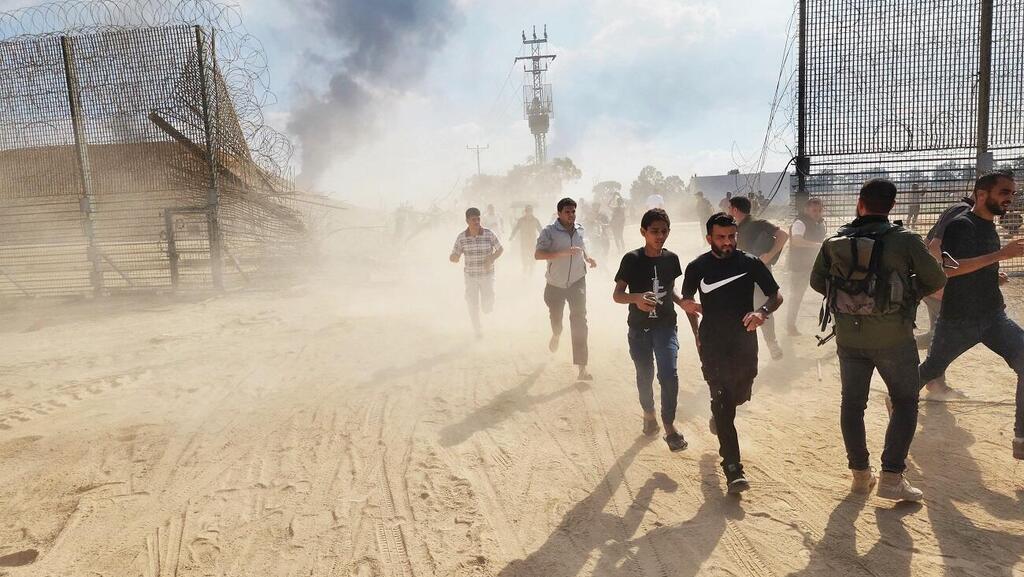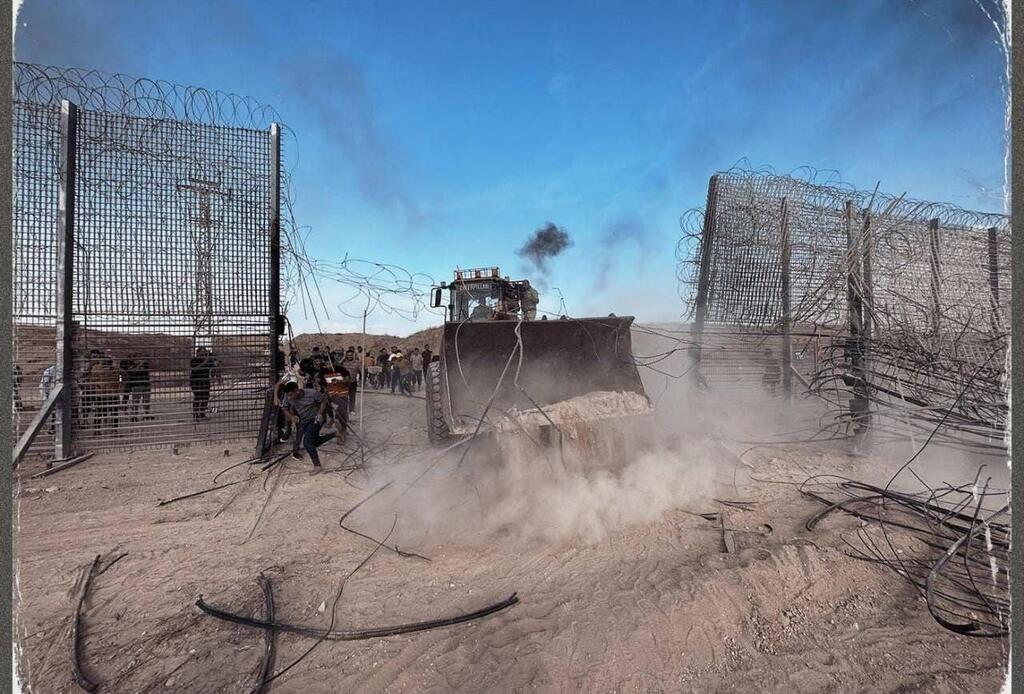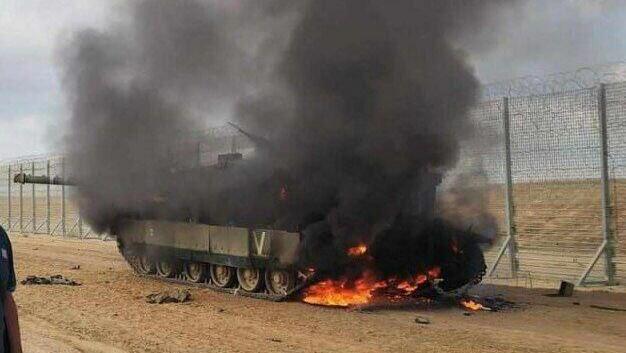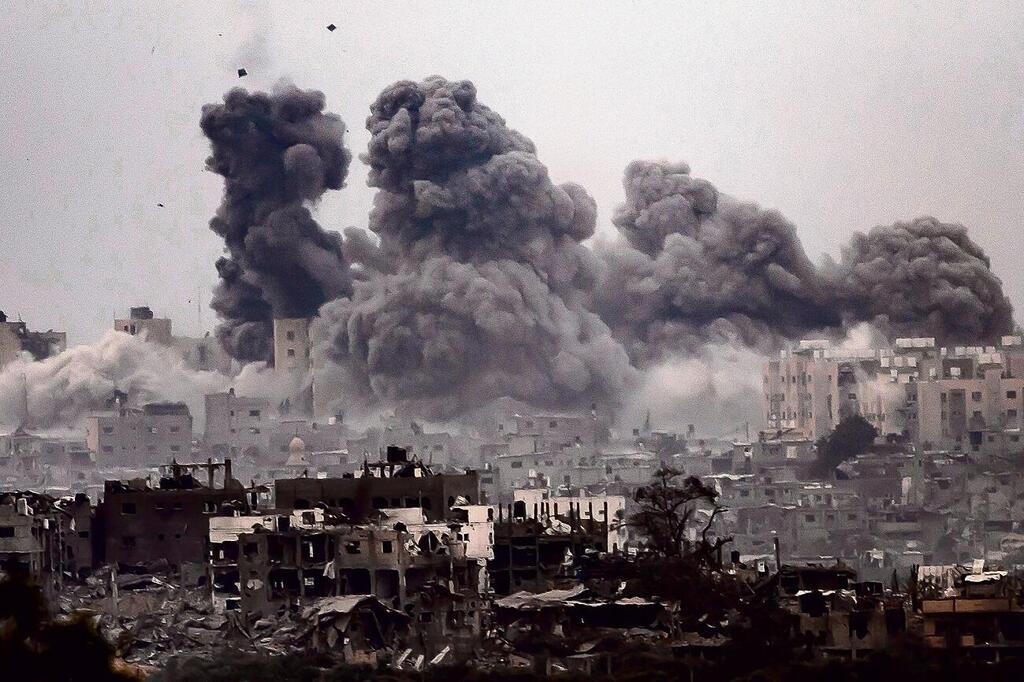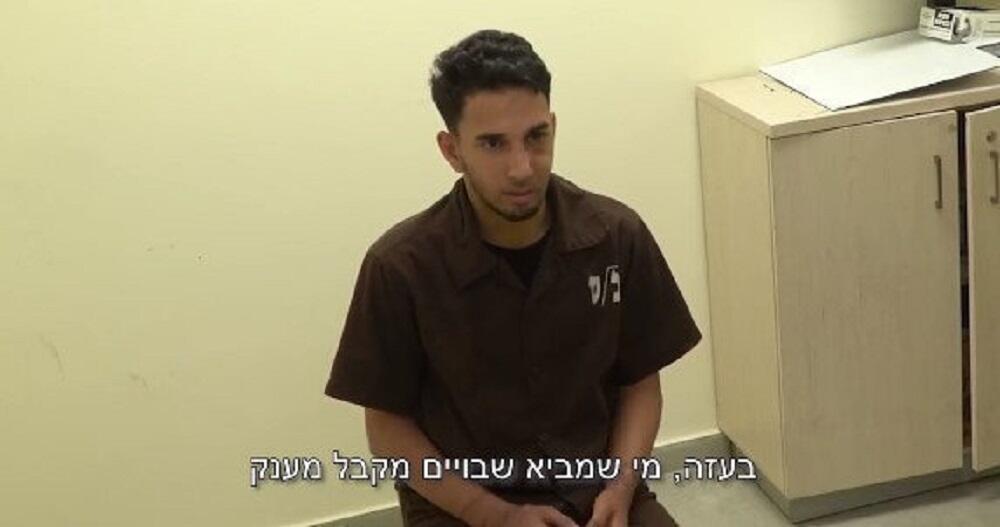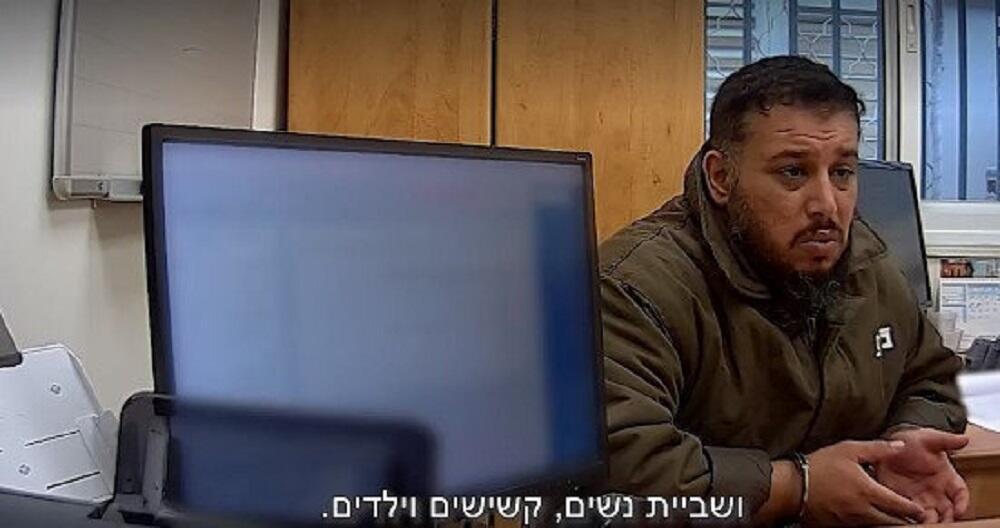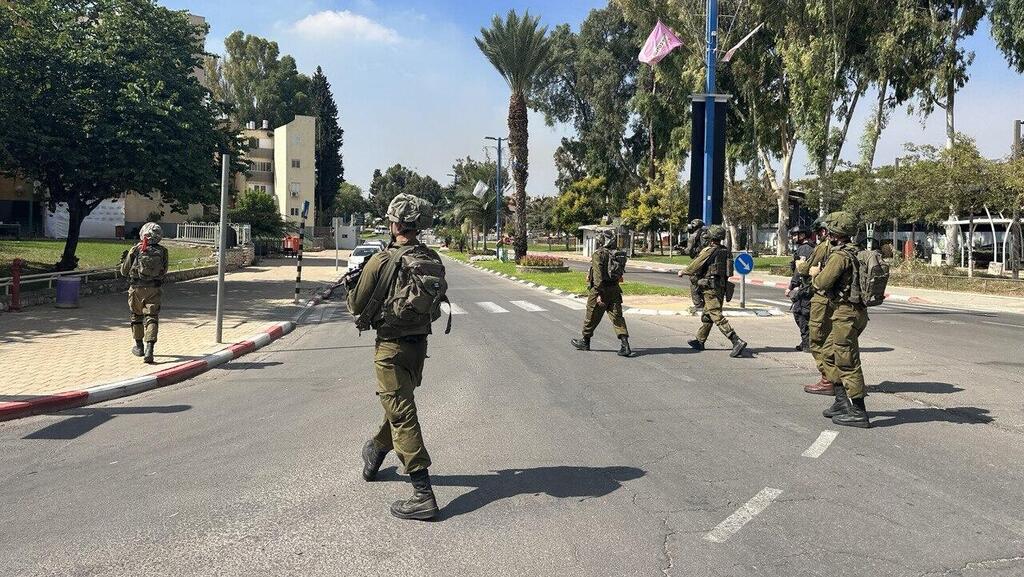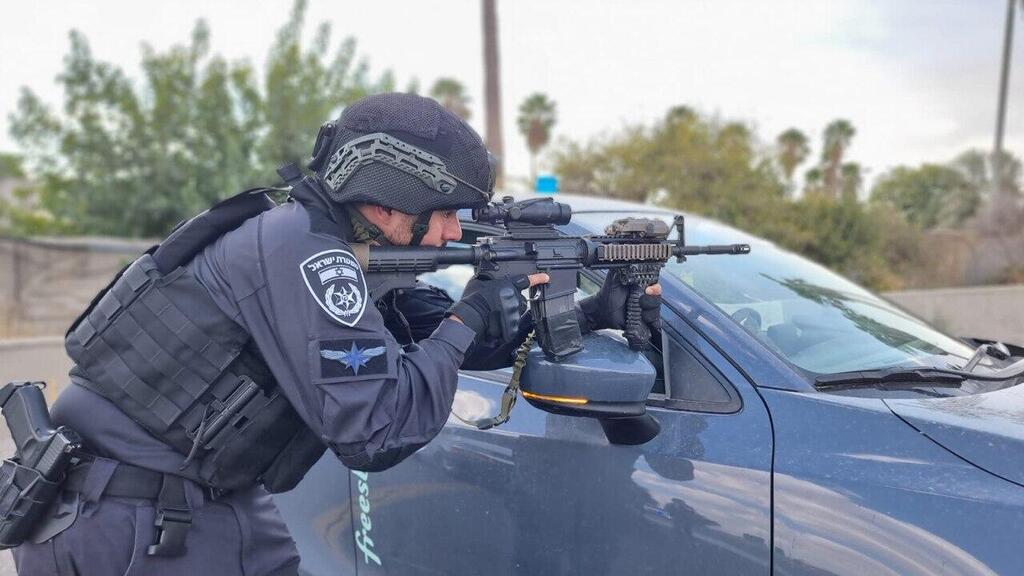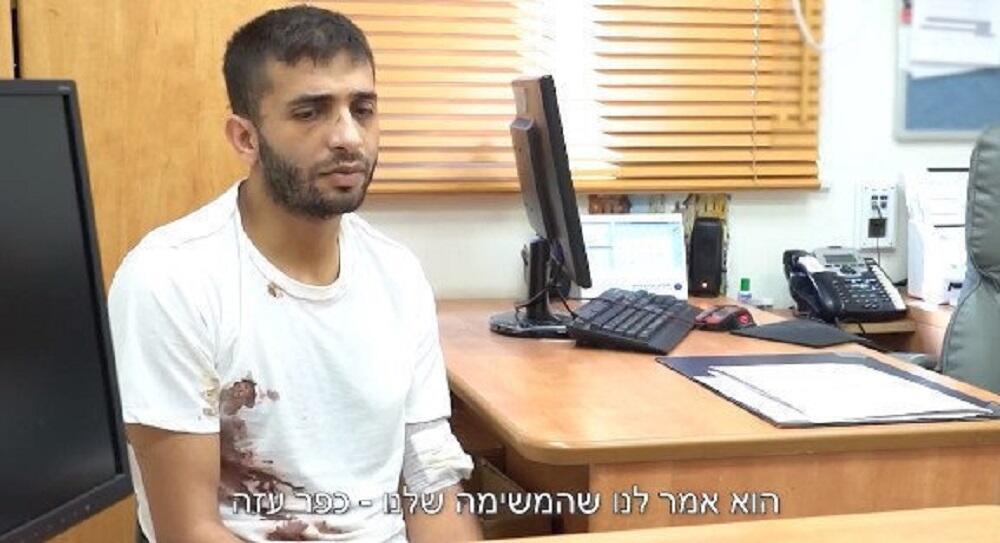In one of the IDF bases in the south, a restricted compound was recently established where there was once nothing but desert. Those who wish to visit the site will have to pass through three different security checkpoints, and this is no coincidence. Here, in what the base personnel refer to as "the pound," dozens of Hamas terrorists are being held.
More stories:
Not far from "the pound," behind green and sealed curtains, several improvised buildings and tents have been set up, hastily put together in recent weeks. This is where Hamas terrorists are interrogated while bound by their hands and feet.
This is just one of several operational interrogation facilities of the IDF’s Unit 504, which was established to deal with Hamas terrorists captured by the IDF since October 7. This classified unit operates under the IDF Intelligence Directorate and specializes in HUMINT (human intelligence).
Its routine work includes locating, recruiting, and operating agents in enemy countries, in the West Bank, and in Gaza. However, during war, the unit's main focus is interrogating prisoners. There are quite a few of them in this war so far: according to an IDF official, 1,500 members of Hamas and other terrorist organizations have been captured by Israel.
"A unique situation has emerged. We have many people from the other side on our territory, and this was even before our forces crossed the border,” a senior IDF intelligence official said. “It’s certainly a disadvantage in every other aspect, but is a clear intelligence advantage. Unit 504's interrogation team has become the hub of intelligence, providing information for the entire operational chain. Unit 504 soldiers’ say, 'We will not rest. We will bring all the information we can for the next stages in the war.'"
In contrast to Unit 8200 and other units under the IDF Intelligence Directorate, which rely primarily on technology and advanced means to gather information, Unit 504 draws its strength mainly from old-fashioned intelligence – people.
This is a comprehensive operational doctrine that relies more on Freud than high-tech, allowing Israeli intelligence, when it operates as it should, to gain a deep and unmediated insight not only into the enemy's plans and systems but also into its innermost thoughts and beliefs.
Unit 504 has had many past successes and has been awarded numerous commendations by the IDF Chief of Staff and Intelligence Directorate for operations that still remain classified. However, this time, it was part of the intelligence failure in predicting Hamas' surprise attack.
"If we had a top-notch HUMINT agent working on this, maybe all this wouldn't have happened. But it seems the unit didn't have good enough agents, or they weren't in the right places."
"It's a disaster," says a reservist soldier from the unit. "If we had a top-notch HUMINT agent working on this, maybe all this wouldn't have happened. But it seems the unit didn't have good enough agents, or they weren't in the right places. With all due respect to the equipment, technology, and other support, it's clear that if we had a skilled agent in the right place, no electronic device or artificial intelligence would have been able to replace the information he could have provided,” he added.
Even the IDF Intelligence Directorate, to which Unit 504 belongs isn’t operating as it should in recent days. "It's clear there was an intelligence failure here," admits a senior figure in the institute. "But now, we are focused on improving the situation from here on. We are focused on working tirelessly."
And that means an entire system, whose sole purpose is to extract the maximum intelligence from each of the prisoners in the minimum amount of time.
Tactical intelligence
Soldiers from the Paratroopers Brigade that operated near Kibbutz Be’eri after October 7 were vigilant. Armed and on high alert, the soldiers conducted searches to locate Hamas terrorists who infiltrated Israel during the attack and were still armed in the area.
Suddenly, a man dressed in a camouflaged uniform, emerged from the bushes, and all the soldiers immediately aimed their weapons at him. "He was a terrorist who simply approached with his hands raised towards one of the Paratroopers' vehicles and surrendered," recounted a source familiar with the details. "He realized that he couldn't survive alone in the wild, that he couldn't go back to Gaza, and he probably didn’t want to carry out a suicide attack."
The Paratroopers seized the terrorist, and immediately called their prisoner investigator who was attached to their unit from the 504 unit. In a brief conversation held on-site with the surrendered terrorist, the 504 unit's investigator learned that he was Hamas' military wing.
Shortly afterward, the investigator realized that this specific Hamas member held many secrets and would be willing to disclose them. The prisoner was quickly taken to an on-site interrogation facility run by the 504 unit, similar to the one in southern Israel. There, 504 unit interrogators managed to extract a substantial amount of intelligence from him.
Relying on the quality information provided by the prisoner and after crossing referencing it with other intelligence and technological means, the Israel Air Force executed a series of attacks that destroyed Hamas' military targets in the Gaza Strip. Furthermore, they continued to “extract vast amounts of intelligence from him,” a senior intelligence official said.
The case of the surrendered terrorist from Be’eri was one example of how Unit 504's prisoner interrogation system operates in the ongoing war. At the helm of this system is an officer with the rank of Lieutenant Colonel, who commands two battalions during wartime: the Field Investigator Battalion and the Facilities Battalion.
The Field Investigator Battalion is primarily composed of reservists, all of them combat soldiers with experience, who are well-versed in the Arabic language and have received interrogation training. These investigators' high combat capabilities allow them to join frontline forces. "Every company commander goes out with an investigator at the ready," a senior intelligence official said.
Once the unit captures a prisoner, the investigators’ primary goal is to extract what's known as "tactical intelligence" from them. Sometimes, this intelligence collection is conducted under fire. "It's an unusual situation, and a complex one," says a reservist of Unit 504. "You're trying to find out if there are more terrorists in the area, where they are, what their plans are, and what means they have at their disposal. Anything that can assist the unit you're attached to in combat."
The second battalion that operates in Unit 504 during wartime is the Facilities Battalion, which is responsible for the unit's interrogation facilities. Most of the members of this battalion are specially trained officers, and they continuously work to operate intelligence agents.
These officers know every old Arabic proverb, and are well-versed not only in Islamic customs and Arab culture but also in various methods for influencing an individual, however cunning and cruel they may be. According to a source in the Intelligence Directorate, such an interrogator "must be sharp, wise, have manipulative skills, and a human approach."
The combination of the Interrogator Battalion working at the frontlines with the Facilities Battalion operating in the background enables Unit 504 to achieve significant results during the course of a war. "As a result of prisoner interrogations, we obtained a lot of locations of Hamas commanders that were eliminated," says a source familiar with the unit's work in recent days. "The Air Force worked very effectively with us."
A three-wave attack
Like most IDF soldiers, the soldiers of Unit 504 were called up to their unit on Saturday, October 7. The first two investigators who arrived in the combat zone joined a force led by the Nahal Brigade that operated in the Kerem Shalom area. They took part in clearing Kerem Shalom and Kibbutz Sufa from terrorists.
Another investigator was involved in the battle for Kfar Aza and personally eliminated terrorists. Besides combat roles, these soldiers were the first to interrogate captured Hamas terrorists face-to-face.
The day after, on October 8, the first interrogation facility was established. Additional facilities were subsequently set up, one of them at a police station in the country’s south, where a large number of Hamas prisoners were held. These facilities enabled Unit 504's interrogators to deepen their interrogation of the prisoners.
"The first thing we learned from these interrogations was that the attack was composed of three waves," said a senior intelligence officer. "The first wave included highly skilled terrorists who had undergone training and were equipped with detailed plans. The second wave included those we define as weapon owners. These are people who were not initially involved in the attack on the border but, at 6:30 a.m., received a directive to carry out Jihad. They left their homes, rode motorcycles, and were picked up by a force of Hamas’ elite Nukhba unit to enter Israeli territory and participate in the attack."
"The first wave included highly skilled terrorists who had undergone training and were equipped with detailed plans. The second wave included those we define as weapon owners."
The third wave, as described by the senior official, consisted of what the military calls “looters." “These are people who didn’t carry weapons but have come to understand that the Gaza border has fallen, and anyone who wants to enter is welcome," he said. These looters were also promised a financial reward by Hamas for each hostage they brought back to the Strip.
10 View gallery
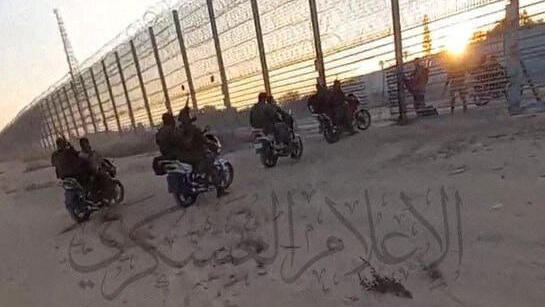

Hamas terrorists infiltrating into Israel on October 7
(Photo: Qassam Bridges media office/Handout via REUTERS)
"But some of the people in this wave wanted to escape from Gaza altogether and infiltrate into Israel in search of employment. Others exploited the opportunity to steal what they could," the official added.
In one case, for example, two Gazan boys aged 12 and 13 were captured in Israeli territory. In another instance, a group of 12 Gazans was arrested not far from Be’eri. Unit 504 interrogators concluded that only three of them were Hamas terrorists who had received training and underwent courses, while the rest were residents of the Strip who exploited the breach in the border to vent their anger and frustration on innocent Israeli residents. "But just because they weren't Hamas terrorists themselves doesn't mean they didn't commit heinous acts," the official said.
The conversations that the 504 Unit's interrogators held with the Gazan detainees, whether they were Hamas terrorists, or looters, couldn't leave them indifferent. "We engaged with individuals who were deeply involved in the details of the attacks they participated in, their roles, and so on," the official explained. "We heard firsthand accounts of the horrors and the instructions they received."
Based on these interrogations, soldiers from the 504 Unit were the first to provide the Intelligence Directorate with an official assessment on the wave-based method used by Hamas in its attack. "Until then, these terms hadn’t been used," the officials said. According to this assessment, the method was not coincidental; after Hamas concealed the attack on Israel until the last moment, once the Gaza border was breached, they made an effort to disseminate information quickly among the residents of the Strip, so that more and more people would join the atrocities committed in Israeli communities and IDF bases near the southern border.
This wasn’t the only sign member of the 504 Unit discovered indicating that the massacre carried out by Hamas was not a random act or one that got out of control, but a meticulously planned operation that had been prepared for a long time.
In their investigations, the unit found that in the past year, Hamas commanders, who are also considered to have religious authority, hinted that it was permitted and even desirable to target civilians, including children, women, and the elderly.
These incitements weren't made in Gaza's mosques, where Israel might have ears and eyes, but within covert frameworks that Israeli intelligence had not been exposed to. "These commanders, known as sheiks, authorized the hell we witnessed," the official said.
"There was a true religious, extremist basis here, similar to that of ISIS. Just as Hamas, had built its military force for the attack for over a year, it also gathered the religious and fundamentalist basis of their operatives so that they could perform these most terrible acts," he added.
When you interrogate those terrorists, do they express remorse for their actions, or do they boast about them?
"You have to consider that the people who tell us these things have made a decision to talk. So when they're speaking, they’re being boastful. They tell us themselves: 'Hamas has become akin to animals; they've become ISIS.'"
Holding back vindictiveness
The work of interrogating terrorists is divided between Unit 504 and the Shin Bet. "There is very significant cooperation between us and the Shin Bet," the intelligence official said. "We work hand in hand. We have a permanent Shin Bet representative in the unit, and we share all of the information we have with one another."
How do you decide whether the 504 Unit or the Shin Bet will interrogate a terrorist?
"We look at who has the advantage in the case. For example, if someone is already known to the service, the Shin Bet will question him. Generally, the service is more oriented toward working with active Hamas operatives and terrorists."
Among the high number of people who’ve been interrogated by the 504 unit, it estimates that only about a third of them are so-called “professional" Hamas terrorists. These are individuals who, it turned out, had received training in interrogation techniques from Hamas, with the assumption that they might fall into Israeli hands.
The rest of the interrogated detainees are those who are not active in Hamas on a daily basis, and some of them, as mentioned, are looters. "Almost half of the detainees are essentially thugs who came to loot and rape whoever they can," a source familiar with the unit said. "Experience teaches us that sometimes these people can provide information that’s no less valuable than that of a terrorist."
Do you learn something from them that you didn't know before?
"We hear things that confirm what we know, but this time from a primary source. Beyond that, we discover that in certain areas, they’ve made progress we weren’t aware of. Naturally, I can't provide more details."
The information gathered by the 504 Unit doesn’t only serve soldiers in the battlefield, "so some of the interrogation materials have been released in accordance with Israeli interests," explains a reservist of the unit.
Since the war began, the IDF, Shin Bet, and police have released several videos of Hamas prisoners during interrogations. In the videos released by the Shin Bet, the terrorists are shown with their faces in plain view. In the videos released by Unit 504 and Intelligence Directorate, the prisoners are dressed in white coveralls. In contrast to the Shin Bet's practice, their faces are blurred to maintain their anonymity.
One way or another, in all the interrogation materials that have emerged in the media since the outbreak of the war, the prisoners recount the same narrative: Hamas ordered us to murder, rape, decapitate, and abuse Israeli bodies. In a video of a prisoner interrogated by the 504 Unit, he says, for example, that he is a Hamas soldier specializing in combat engineering.
According to him, a Hamas unit to which he belonged received orders to infiltrate the kibbutzim using jeeps, after the kibbutz gates had already been breached by a Hamas advance force. "We got on the jeeps and drove. The gates were open because everything was prepared ahead of time."
According to his account, after entering the kibbutz, he and his comrades broke into "room after room," threw hand grenades, and opened fire. "The goal was to kill anyone inside the rooms - women, children, everyone," he said.
In another interrogation video, the terrorist discusses the intentional killing of Israeli civilians. The terrorist in the video, filmed inside what seems to be an interrogation facility, is Muhammad Nahed Ahmad El-Arsha, a 21-year-old from Rafah. He sits in front of the interrogator with his eyes covered, and it's apparent that he’s shaking and afraid. His behavior suggests he’s not a Hamas terrorist but another Palestinian looter.
In the video, the prisoner revealed that he and his comrades received orders to murder "elders, men, women, infants, children, youth, and girls." The interrogator asked, "Girls? What did you do to them?" The prisoner responds, "We killed them." He also mentioned that some of the victims had been decapitated.
It’s important to note that these videos, like other interrogation videos that have found their way to social media, are edited and don’t show the entire interrogation in its entirety. However, from discussions with Unit 504 personnel in the present and past, it’s clear that the respectful treatment of the prisoners, as well as the cool-headedness and even courtesy, characterizes the unit’s interrogation methods.
"Some of the things we succeed in finding out aren’t done through aggression and assertiveness, but the opposite, via empathy," an intelligence official said. "So, it's not a job that a young soldier can do. We’re looking for people who have had experience in life, and have a higher personal maturity compared to regular soldiers. And, of course, the better interrogators are placed in positions we deem much more important."
I assume you train your interrogators not to succumb to emotions of vindictiveness and anger when they face a terrorist face to face. But obviously, you have never trained interrogators to deal with an encounter with a terrorist who, just half an hour ago, murdered an infant.
"It's definitely a challenge. We had people who had a very hard time. Some of the interrogators who joined the forces on a Saturday night were exposed, like all the forces, to extremely disturbing scenes. There were people who saw the most difficult scenes at a music festival in Re’im, Be’eri, Kibbutz Sufa, and other places. But our people are very focused professionally, and that keeps them safe."
"We had people who had a very hard time. Some of the interrogators who joined the forces on a Saturday night were exposed, like all the forces, to extremely disturbing scenes."
When the official was asked if, as part of field interrogation, the 504 Unit’s interrogators are allowed to use violence against prisoners, he gave an official response: "We work, like the Shin Bet, under a strict legal framework and the precise regulations of the Military Advocate General."
A reserve soldier from the unit added further, saying, "The days when interrogators operated with lawlessness are long gone. Today, we’re under inspection, and we can't do whatever we want. We don't have legal counsel like the police or the Shin Bet, but we have very clear orders. If I want to do something out of guidelines, I need approval from my commander, and if it's something really special, the commander needs approval from his commander."
When you say "something special," do you mean what the Shin Bet calls "special means"?
"Of course. We have such tools as well, but they require approvals."
How do you interrogate someone without using special means?
"There are all kinds of psychological motivators for admission that we’re familiar with, such as anxiety, helplessness, difficulty in keeping secrets, feelings of disappointment and failure, feelings of guilt. A professional interrogator knows these things and is aware of how to use all of them to their advantage. We can also employ sympathy, friendship, and pride."
When you're facing a terrorist who murdered a child, how do you maintain self-control and objectivity in the face of a desire for revenge?
"There are always exceptions, but most experienced interrogators operate just like a doctor who receives a wounded terrorist and needs to save his life. At that moment, we become professionals, and our goal is to obtain intelligence. Most of us can control our desire for revenge and immediate impulses."
How?
"Because we’re always aiming for our goal."
First published: 13:55, 11.05.23



